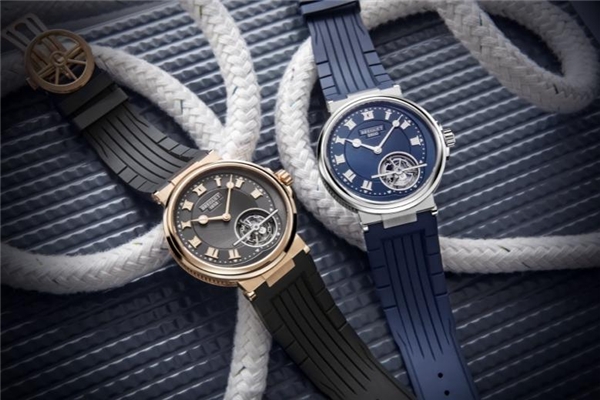In Colombia鈥檚 Gulf of Tribug谩, a deep channel runs from the Pacific Ocean into shore. It鈥檚 a promising place for a port. But right now, only the occasional ship plies these waters. Fishing in the tiny coastal towns around the gulf is small-scale; many locals use dugout canoes. This coast is peaceful in a way that most people don鈥檛 stop to think about: its seas are largely unmarred by human noise. Its underwater world is filled with the whistles and clicks of endangered humpback whales, the grunting of fishes and the snapping of shrimp.
鈥淚t鈥檚 your perfect, wanting-to-fall-asleep cacophony of animal sounds,鈥?says Kerri Seger, a researcher with the marine-technology firm Applied Ocean Sciences in Santa Monica, California, who is studying the region鈥檚 marine acoustics.
That could soon change. Plans are afoot to build a major international port in the gulf to improve transport routes to Asia. The transition from quiet coast to bustling shipping route could disrupt humpbacks (Megaptera novaeangliae) and other local populations. Although Seger hopes that local protests will prevent the port development, she also sees Colombia鈥檚 Pacific coast as a rare experimental site that could help to answer a pressing question for marine science: how badly is humanity鈥檚 growing acoustic footprint damaging ocean life?
International concern is ramping up fast as evidence grows about problems arising from the din created by military sonar, seismic surveys, oil drilling, dredging and ship engines. Short, loud blasts of sound can cause physical damage; persistent background noise, such as that from shipping, can alter a host of systems and behaviours, from communication to feeding.
Whale calls from a pod are masked by the sound of a large passing ship.
Download MP3 Copyright: OrcaLab鈥淭here is a political will to regulate underwater noise,鈥?says Jakob Tougaard, a bioscientist at Aarhus University in Denmark. Last November, the United Nations agreed on resolutions to conserve ocean health that noted an 鈥渦rgent need鈥?for research and cooperation to address the effects of anthropogenic underwater noise. The European Union has adopted legislation to achieve healthy marine systems by 2020, including a provision to ensure that underwater noise does not 鈥渁dversely affect鈥?marine life. Shipping organizations are concerned, too: in 2014, the International Maritime Organization issued guidelines on reducing noise from vessels.
But there鈥檚 still a gap in the science. Because noise is so pervasive, it is hard to study the impact as it ramps up. It isn鈥檛 clear whether marine systems can work around or adapt to it 鈥?or whether it will drive crashes in already-stressed populations. So researchers are becoming acoustic prospectors, searching for quiet zones and noisy habitats in efforts to chronicle what exactly happens when sound levels change. Efforts range from natural experiments on the effects of a plan to re-route shipping lanes in the Baltic Sea, to investigating the impact of a trial scheme in Canada to reduce ship speeds in coastal waters off Vancouver.
In the grand scheme of ocean ecosystem threats, climate change might be a bigger issue 鈥?along with acidification and pollution. But researchers worry that background noise will be the straw that breaks endangered species鈥?backs. 鈥淭wo stressors together are more than just A plus B,鈥?says Lindy Weilgart, a biologist at Canada鈥檚 Dalhousie University in Halifax. 鈥淭he negative effect is greater than the sum of the parts.鈥?/p>
Far-from-silent world锘?/h2>
Decades ago, not much was known about ocean noise. When French oceanographer Jacques Cousteau made a documentary about the ocean in 1956, he called it The Silent World 鈥?a misnomer that researchers today point to with much mirth. In reality, the ocean is a noisy place: waves, marine life and rainfall create their own din. A humpback whale can be as loud as an outboard motor, Seger says.
Humanity has greatly added to the ocean soundscape. There is no global map of ocean noise, but researchers agree that ship traffic approximately doubled between 1950 and 2000, boosting sound contributions by about 3 decibels per decade. That translates to a doubling of noise intensity every 10 years (decibels are calculated on a logarithmic scale). Sound travels differently through air from through water, making it hard to compare the two environments. But the blast of a seismic air gun used to map the sea floor for oil and gas can be as loud as a rocket launch or an underwater dynamite explosion; ship engines and oil drilling can reach the roar of a rock concert (see 鈥楢 sea of sound鈥?. Some of these sounds are audible for hundreds of kilometres.
锘?/p>
The most obvious sign of trouble came when masses of dead beaked whales started showing up on beaches. Loud sounds seem to trigger panic dives that cause a kind of decompression sickness in the cetaceans, and haemorrhages in their brains and hearts. In the five decades before 1950, researchers recorded just seven mass strandings; but from then to 2004, after the introduction of high-power sonar for naval operations, there were more than 1201. Studies show that exposure to loud noises can damage ears and cause hearing loss in cetaceans. It can also affect invertebrates 鈥?by impairing the development of scallop larvae, for example2. In 2017, researchers reported that seismic-survey blasts could scythe through the water and kill zooplankton more than one kilometre away3; the acoustic beam dispatches them 鈥渓ike mowing the lawn鈥? says Rob Williams, co-founder of the cetacean-conservation group Oceans Initiative in Seattle, Washington.
Background noise also has an effect. Researchers got a rare chance to study this in 2001, after the terrorist attacks on New York City鈥檚 twin towers. Commercial transport ground to a halt, and that dimmed the marine noisescape substantially. Rosalind Rolland, director of ocean health at the Anderson Cabot Center for Ocean Life in Boston, Massachusetts, was conducting a long-running study of faeces samples from right whales (Eubalaena glascialis), and noticed a drop in stress-related metabolites4. That was the first biological evidence that exposure to low-frequency ship noise was associated with chronic stress in cetaceans.
A swathe of other studies has shown that boat noise can increase stress-hormone levels in creatures including fishes and crabs, causing them to spend more time patrolling for danger than caring for offspring, for example. In one study5, the survival rate of Ambon damselfish (Pomacentrus amboinensis) on a reef dropped to less than half its previous level when the animals were exposed to boat noise. Dolphins change their tune: they whistle at a lower frequency, with less variation, if the ambient noise is loud6. Some humpback whales simply stop singing. All this is likely to alter relationships between species in as-yet-unknown ways, says Williams: louder seas are surely changing who can effectively catch food, find a mate or hide from predators.
A rule of thumb suggested in 2016 by the US National Oceanic and Atmospheric Administration is that pulses of sound above 160 dB cause marine mammals to change their behaviour. For chronic, continuous, noise, that benchmark is a lower 120鈥塪B.
The difficult question is whether this noise is something that ecosystems and populations can adapt to, or something more serious.
Perhaps the best evidence that background noise might be a critical problem comes from data on killer whales (Orcinus orca) off the Pacific coast of Canada. Researchers including Williams reported that resident whales spent 18鈥?5% less time feeding when surrounded by boat noise than when bathed in quiet7,8. There are only 75 southern resident killer whales remaining in this area, and they are already battling a drastically lowered food supply, thanks to declining salmon stocks, Williams says. 鈥淲e鈥檙e not talking about a quality of life issue; we鈥檙e talking about something with real impacts.鈥?/p>
The quiet-oceans experiments
In the face of such challenges, environmental scientist Jesse Ausubel at New York City鈥檚 Rockefeller University, a decade ago proposed the grand idea of an International Quiet Ocean Experiment (IQOE). Ausubel had previously co-founded ambitious projects including the Census of Marine Life, a massive project that aimed to catalogue all oceanic organisms. In 2011, he and others published the idea of hushing the ocean to see what the absence of noise allows.
Since quieting the entire ocean is infeasible, even for a day, the idea was adapted to encompass smaller, more manageable tasks. In 2015, the IQOE published its science plan, and it now acts as an umbrella body dedicated to coordinating, but not funding, marine noise research. One of its main goals is to simply gather more data: last year, it convinced the Global Ocean Observing System, a lauded UN project that coordinates the satellites, buoys and research vessels that monitor the ocean, to add noise to its list of essential variables, alongside other fundamentals such as temperature.
Among the projects that the IQOE endorses are Seger鈥檚 work in Colombia, and a natural experiment in the Baltic. Sweden and Norway have taken the unusual decision to divide a main shipping lane through the Kattegat Sea (between Denmark and Sweden) into two, starting next year, to make the busy route safer to navigate. Tougaard and colleagues plan to deploy 10鈥?0 hydrophones throughout the region this summer to help document the effect of shifting the paths of some 80,000 ships per year. Such data will be useful in other regions, too, Tougaard says, including a shipping lane that crosses near some sandbanks used by a critically endangered population of Baltic Sea harbour porpoises (Phocoena phocoena) for breeding. 鈥淚f there鈥檚 an impact, it might make sense to move that shipping lane,鈥?he says. 鈥淚t will be a longer route, which costs money and means more CO2 coming out of the chimney. So we have to be certain.鈥?
The Arctic is another area of opportunity for study, says Seger. As the ice melts and shipping lanes open, anthropogenic noise could become a major stressor for species facing multiple rapid changes. Ship traffic in the region increased by 75% from 2005 to 2017, and some researchers have recommended moving shipping lanes to avoid sensitive species.
Williams thinks he has found another spot for controlled studies. In 2016, he learnt about a Hindu tradition called Nyepi, a day of silence that takes place in Bali in early March. It is rigorously observed: all shops, airports and shipping and fishing shut down, and tourists are gently led off the beach back into their hotel rooms. Williams saw this as a unique opportunity: 鈥淣o one in the world shuts up for a day,鈥?he says. In 2017, he went to Bali and put six hydrophones in the water to measure the effect of the silence9. 鈥淭he drop was in the order of 6鈥?鈥塪B. About the same off New York and Boston after 9/11,鈥?he says. 鈥淭his was extraordinary.鈥?The next step, says Williams, is to investigate what the corals and fishes do in response to the silence although as yet he has no specific plans or funding to go back.
Keeping quiet
As with climate change, there鈥檚 enough evidence for the harm of marine noise to move forward with action, but debate lingers over the scope and urgency of the problem. Fortunately, noise is easier and quicker to reduce than is, say, ocean acidification or fossil-fuel use, says Seger. 鈥淚t鈥檚 redesigning propellers and re-routing shipping lanes,鈥?she says. 鈥淲e can make tangible changes.鈥?
One experiment has tested some of those changes in the Haro Straits around the southeastern tip of Canada鈥檚 Vancouver Island, where the clan of killer whales that Williams studied spend time each year. From August to October of 2017, many of the container ships and merchant freighters travelling through the straits voluntarily slowed to 11 knots (nautical miles per hour) from speeds as high as 18 knots. That added half an hour to their journey, but reduced the thrum of their engines. The ships were responding to a request by the port鈥檚 Enhancing Cetacean Habitat and Observation (ECHO) Programme, which conducted a second trial last year. For some ships, dropping by just 3 knots cut noise intensity in half.
When ECHO monitored a spot important for killer whales, noise levels wobbled between 75鈥塪B and 140鈥塪B both before and during the slowdown, depending on the weather, wildlife and passing ships. But during the 2017 slowdown, the noise dropped by a median of 1.2鈥塪B 鈥?a 24% reduction in sound intensity. The trial wasn鈥檛 designed to study whale behaviour, but models predict that this drop in noise should reduce by about 10% the time that the waters are clogged with befuddling noise (for these whales, estimated to be levels above 110鈥塪B), giving the whales a better chance of filling their bellies. The full 2018 results haven鈥檛 yet been released.
One of Williams鈥檚 studies showed that in a modern fleet of more than 1,500 ships, half the noise came from just 15% of vessels10, so targeting the worst offenders could go a long way. 鈥淭hat means we do not need draconian fleet-wide regulation to get us to our conservation targets,鈥?says Williams. But retrofitting a ship with noise control can be expensive, and all calls to hush ships have so far been voluntary. In 2017, the Vancouver port authority started offering discounted rates for quieter ships, making Canada the first country in the world to host a financial incentive to reduce marine noise. 鈥淚n my view, Port of Vancouver is years ahead of the rest of the world,鈥?says Williams. But so far, uptake is limited: in 2017, only 34 of roughly 3,000 ships visiting the area took advantage of the noise discounts.
Meanwhile, acoustic prospectors are helping to identify other areas where noise might beneficially be reduced. Williams has mapped out a hotspot where ambient noise overlaps with porpoise populations off the coast of Haida Gwaii 鈥?a sparsely populated archipelago off the coast of British Columbia sometimes called the 鈥楪alapagos of the north鈥?sup>6. Similar work has looked at noise pollution in the Mediterranean. Such work can also pinpoint areas that are both frequented by wildlife and still quiet 鈥?prime areas, Williams argues, for preservation. Existing conservation mechanisms, such as Marine Protected Areas (MPAs), might be natural places to introduce the idea of limiting noise, Williams argues. It would be a coup, he says, for someone to host the world鈥檚 first official 鈥渜uiet MPA鈥?
The good news is that noise pollution can be tackled extremely rapidly; there are known solutions and effective ways to mitigate the risk. Weilgart says that the air guns typically used in seismic surveys could be replaced with an underwater vibrator that creates a smaller sound footprint and a lower peak pressure, reducing the chance of injury to marine life. When regulators set limits on the noise of pile driving for offshore wind farms in Germany, Weilgart says, the industry quickly took up quieter methods, such as wrapping piles in a curtain of bubbles to absorb the sound. Companies are now coming up with ways of sinking the piles rather than hammering them in, she adds.
Vessels can be made quieter by elevating engines off the ship floor, or using propellers designed to reduce cavitation 鈥?the creation of tiny bubbles, which pop loudly when they explode. Modern communication methods can help ships to approach ports slowly, adds Tougaard, rather than speeding in only to idle just outside until a docking point becomes available. Many cruise ships now use electric motors to drive their propellers, mainly to reduce noise levels for their paying customers, but also to the benefit of marine life.
Fortunately, Weilgart says, most ship-quieting moves go hand-in-hand with improving fuel efficiency. 鈥淚鈥檓 very solutions focused,鈥?she says. 鈥淲e just need to quiet the bloody noise.鈥?/p>
Nature 568, 158-161 (2019)
 时尚街拍网
时尚街拍网














